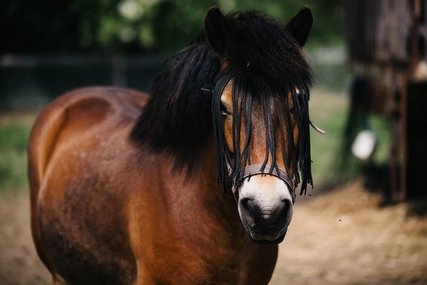
Elstal: a diverse landscape outside the gates of the city
The Döberitzer Heide, fresh air and silence
The Döberitz Heath - nature and history on the outskirts of Berlin
Wild horses, cattle and goats graze peacefully in a landscape whose tranquil beauty is reminiscent of the films of Russian director Andrei Tarkovsky. Just 30 minutes from Berlin's main railway station, the Döberitzer Heide offers fresh air, wide horizons and a retreat for people and nature. This is where past and present meet: bright yellow gorse lines the heathland, which was once the scene of military manoeuvres. Today it is a place of peace, nature conservation and recreation.
Experience nature at the Döberitzer Heide Nature Experience Centre
The new Döberitzer Heide Nature Experience Centre has been located in the middle of the Sielmann Nature Landscape since 15 March 2024. This centre invites visitors to discover the fascinating biodiversity of the region in an exciting and interactive way. A multimedia exhibition guides visitors through the hidden world of the Döberitzer Heide, complemented by an impressive mural of the local flora and fauna.
Information boards, high-definition nature films and an interactive quiz bring the knowledge to life - ideal for families, school classes and daycare groups. The opportunity to marvel at life-size bison, Przewalski's horses, red deer and wolves is particularly impressive. With the help of a nature experience app, visitors can explore the exhibition and the outdoor area and experience the heath from a new perspective.
In the exhibition and on guided tours, nature enthusiasts can learn more about the flora and fauna of the Döberitz Heath. This new educational centre is aimed at interested visitors, school classes and daycare groups.
The centre is a highlight for all nature lovers who want to learn more about the Döberitz Heath and its importance for nature conservation. Further information can be found at: Döberitzer Heide Nature Experience Centre.
Historical review: From military training area to nature reserve
The history of the Döberitz Heath goes back a long way. Over 300 years ago, the Prussian kings Frederick William I and Frederick II used the area for military exercises. The Döberitz military training area was established under Kaiser Wilhelm II in 1892.
The Olympic Village was built here for the 1936 Olympic Games, with over 140 residential buildings, a reception building and sports facilities to accommodate around 4,000 athletes. Today, the village is a listed building and can be visited as part of a guided tour.
After the Second World War, the Soviet Red Army left its mark on the Döberitz Heath, which it used intensively for manoeuvre exercises until 1992. During this time, a valuable open landscape was created that provides a habitat for numerous rare animal and plant species.
Nature conservation and landscape management
Since the withdrawal of the Red Army, the Naturschutz-Förderverein Döberitzer Heide e.V. has been committed to maintaining and preserving the landscape. The open landscape is sustainably managed with robust animal species such as Galloway cattle, heather sheep, horses and goats in order to preserve the diversity of flora and fauna. A former tank training base has been converted into a nature conservation centre, which now serves as a starting point for hikes and events.
The Sielmann Nature Landscape Döberitzer Heide

The Heinz Sielmann Foundation actively protects nature on around 3,600 hectares. Here bison, Przewalski's horses and red deer live in a protected area that visitors can explore from designated hiking trails. Over 55 kilometres of hiking trails and 13 kilometres of bridleways invite you to discover the heathland. A viewing tower offers spectacular views across the landscape as far as the Berlin television tower. Rest areas also make the heathland the perfect place for a picnic in the countryside.
Other highlights in Elstal
In addition to the Döberitzer Heide, there are other exciting excursion destinations in Elstal:
- Olympic Village Berlin 1936: a historical monument that can be visited on guided tours.
- Karls Adventure Village: A popular family destination with seasonal attractions, a farmers' market and regional delicacies centred around strawberries.
Tips for your visit
From Berlin, you can reach Elstal in less than 30 minutes with the regional railway RE4, RE8 and RB 14. You can find more information about the offers under the following links:
- Nature Experience Centre and Sielmann Nature Landscape Döberitzer Heide: www.sielmann-stiftung.de
- Döberitzer Heide Nature Conservation Association: www.doeberitzerheide.de
- Karl's Adventure Village: www.karls.de/elstal.html
